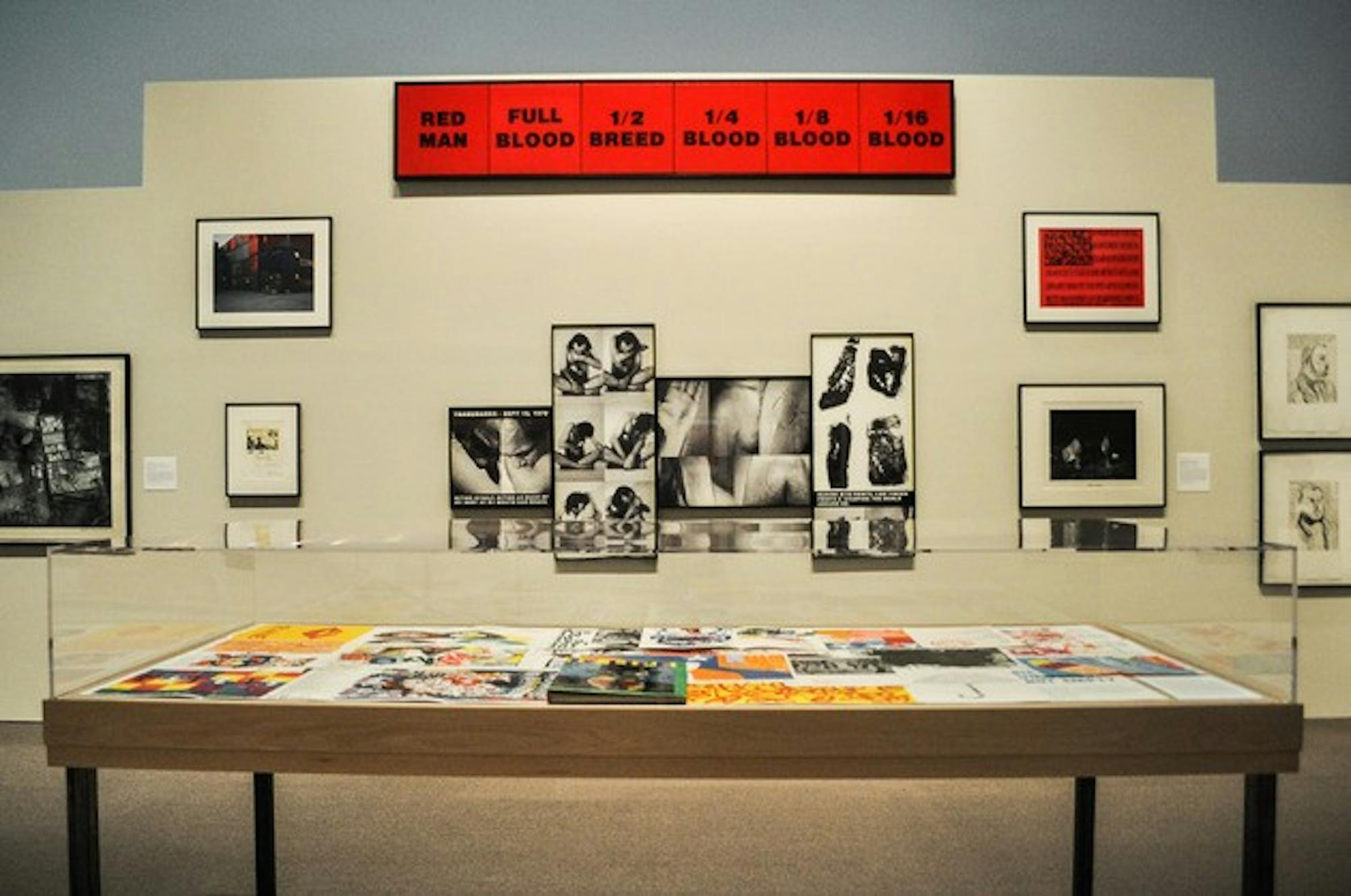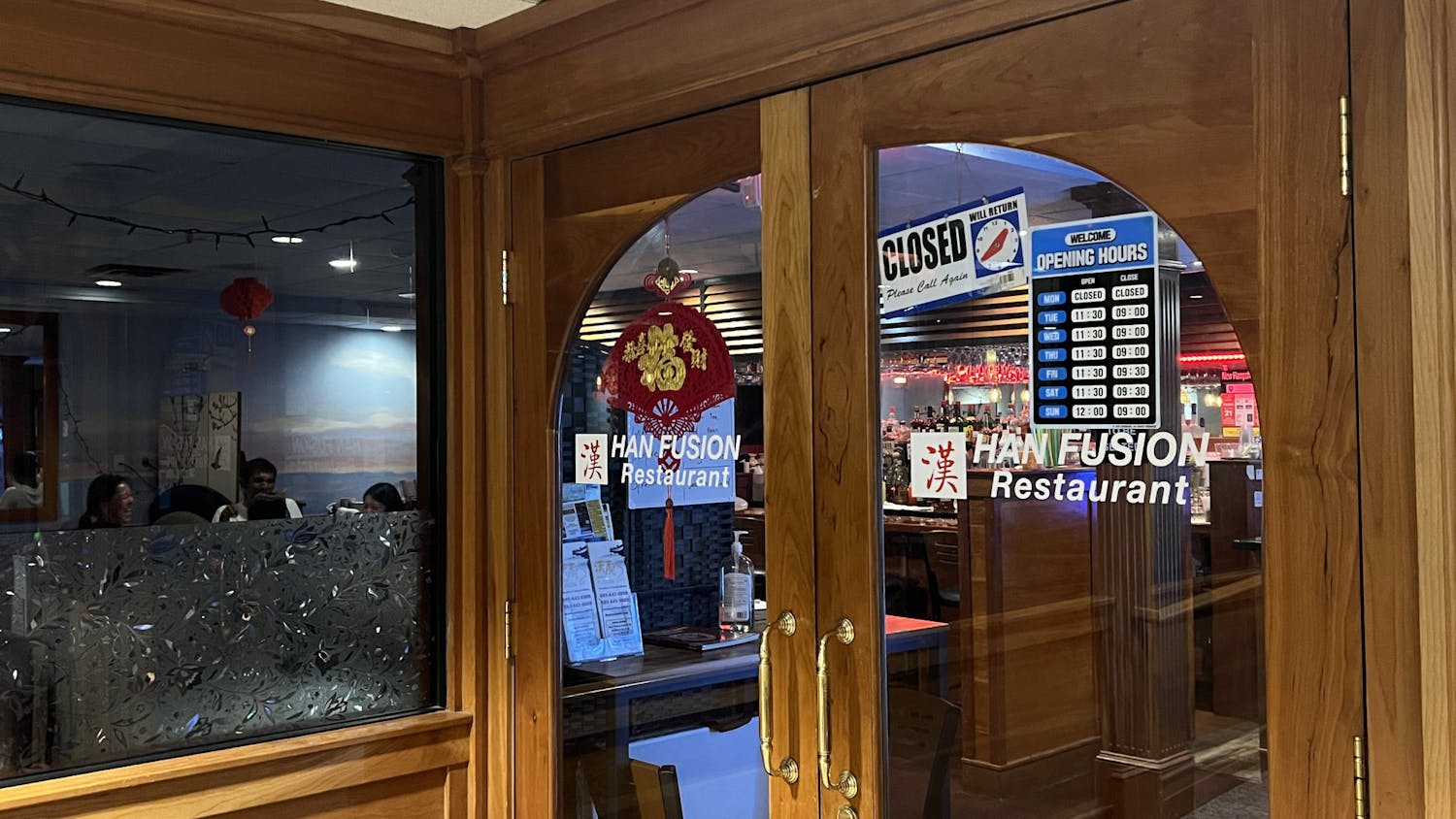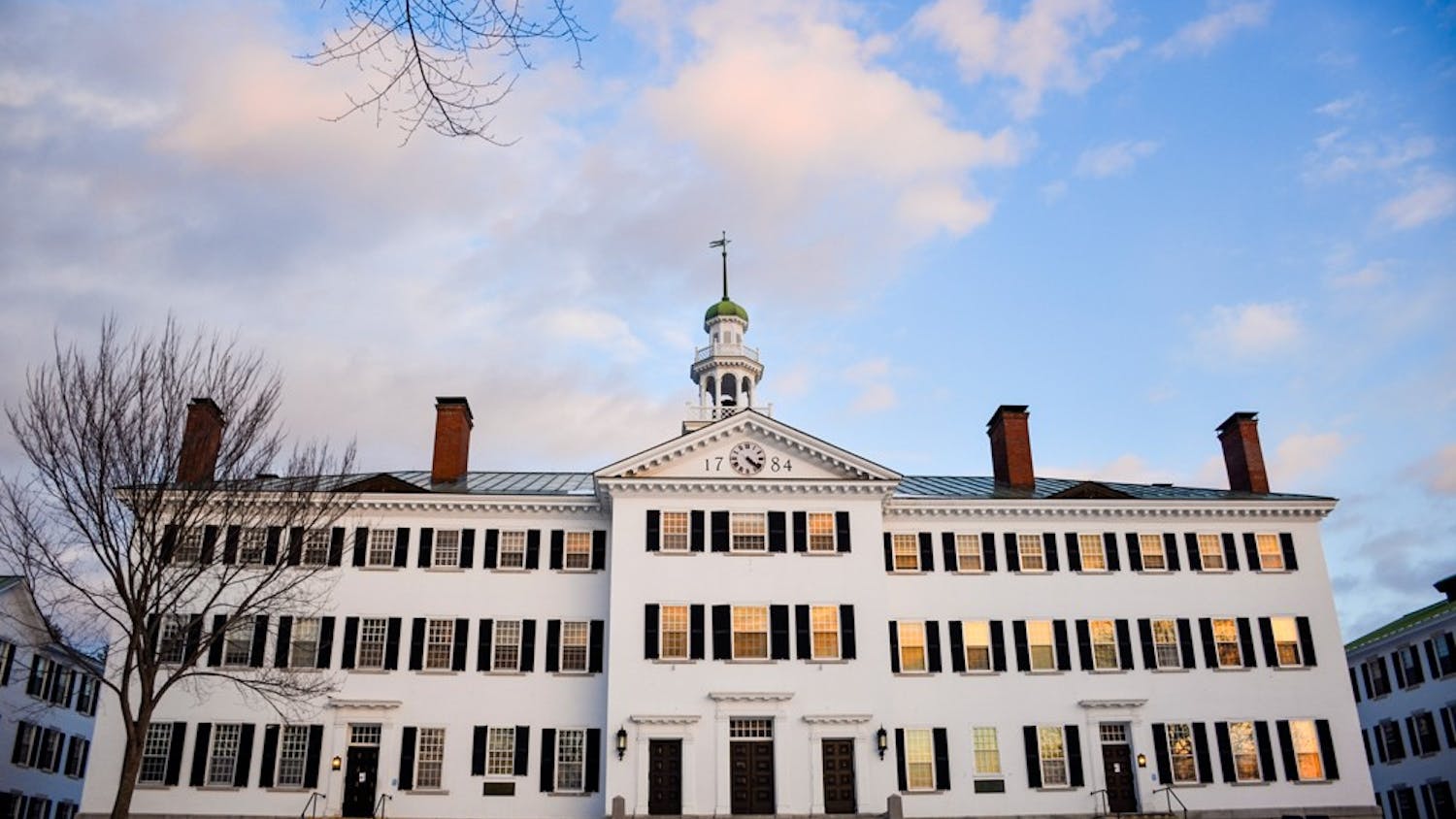The exhibit was organized around the theme "words in art" and features 32 pieces from the Hood's permanent collection.
"I was looking for a broad theme in order to include a range of works," Taylor said. "I also didn't want it to be just anything in contemporary art. I wanted it to be something students could get their hooks into, that would really challenge them."
The theme lent itself to discrete groupings: some works connect to language through signage and advertising, while others relate to the human body and personal identity.
Students wrote identification placards for works in the show. These studio art majors had the freedom to write from the perspective of a working artist or express their emotional reaction to the piece they chose.
The earliest artwork featured is Marcel Duchamp's "L.H.O.O.Q.," completed in 1919. The work is a postcard of Leonardo da Vinci's "Mona Lisa" that Duchamp purchased at the Louvre Museum to which he added a mustache, goatee and the letters "L.H.O.O.Q." Spoken in French, it becomes a phrase complimenting the famous unknown lady's figure.
Taylor described DuChamp's work as similar to "a schoolboy's drawing in a lavatory," but also extremely important to the conceptual evolution of contemporary art.
"This kind of intervention, on a card he bought at the Lourve but then called his own art, is the kind of appropriation that is at the heart of this exhibit," Taylor said.
Perhaps the most recognizable piece in the show is Edward Ruscha's 1963 oil painting, "Standard Station, Amarillo, Texas." The work was painted with the pop art aesthetics of crisp, flat lines and bright primary colors and connects directly with the world of advertising by prominently featuring Standard Oil company labels on the gas station pumps.
Measuring 10 feet long, the painting is the largest in the exhibit and dominates the space on the main gallery wall. The industrial whiteness of the station and its bright red sign project it forward toward the viewer, while the cool navy wash in the background sinks back behind it.
"Word and Image" also features popular 1960s artist Roy Lichtenstein's "Crak," a cartoon-styled lithograph completed between 1963 and 1964. Like Ruscha, Lichtenstein flattens the space of his composition and employs a limited palette of bold, primary colors. The lithograph features a female French resistance fighter in World War II, holding a large musket toward the viewer. Lichtenstein captures the moment of the musket's explosion with a pop of white and yellow smoke and black capital letters that spell out "CRAK!"
Taylor said the Hood hesitated to include the piece after the shooting at Sandy Hook Elementary School in Newtown, Conn., but decided the issues surrounding gun violence made it important for the show. The accompanying placard focuses on the depiction of gun violence as well as the figure behind the gun, in light of the Defense Department's recent decision to allow women to serve in combat roles.
In a 1984 photograph by Joel Sternfeld, language enters the artwork seemingly by chance: a sign advertising "Sweet Cider" at the farmer's market. In the foreground, pumpkins tumble toward a wire fence, cracked open and decaying in the field while others are stacked ready for sale.
The tension in the piece comes from a fireman in uniform inspecting the pumpkins, while a family's home leaps with bright orange flames on a distant hill. The placard comments that the scene seems too ironic to not have been staged, but does not resolve whether it was in face staged.
Studio art major Davey Barnwell '13 said Taylor visited the senior studio arts seminar classes at the beginning of the winter to introduce the placards writing project.
"I think it's a very rare opportunity to have a museum display or show displays written by other artists," Barnwell said. "Taylor is very much interested in getting our open, direct, uncensored thoughts about the piece we chose, especially from an artist's point of view."
Taylor called the work a "tough assignment," but valuable in providing students with insight into a curator's role, specifically in trying to introduce a viewer without extensive knowledge of an artist or art movement to a new work without giving too much away.
"To actually write the museum label is not as easy as it sounds," Taylor said. "If a viewer reads the placard and then walks on without going back to the artwork to reexamine it, then the placard has failed."
Studio art major Luca Molnar '13 wrote about Fred Wilson's 2008 sculpture piece, "Ota Benga," a bust of a Congolese Mbuti man who was featured with other Africans in an anthropology exhibit at the St. Louis World Fair in 1904. Benga was then moved to a human zoo exhibit at the Bronx Zoo and eventually committed suicide.
"This was a really exciting way to engage with the art in the Hood's collection and with the Hood as an institution," Molnar said. "I found this piece compelling because of how Wilson uses relationships with museums and their collections as a means of intervening in those very institutions' deployment of their power in acquiring and displaying certain art."
Other artworks in "Word and Image" include pieces by prominent feminist artists like the Guerilla Girls as well as lesser known international artists like Cuban artist Maria Magadelena Campos Pons and Moroccan artist Lalla Essaydi. The show also includes a work by studio art professor Gerald Auten.
"Word and Image" opens today aruns through August 4.
Cavalier is a member of The Dartmouth staff.




